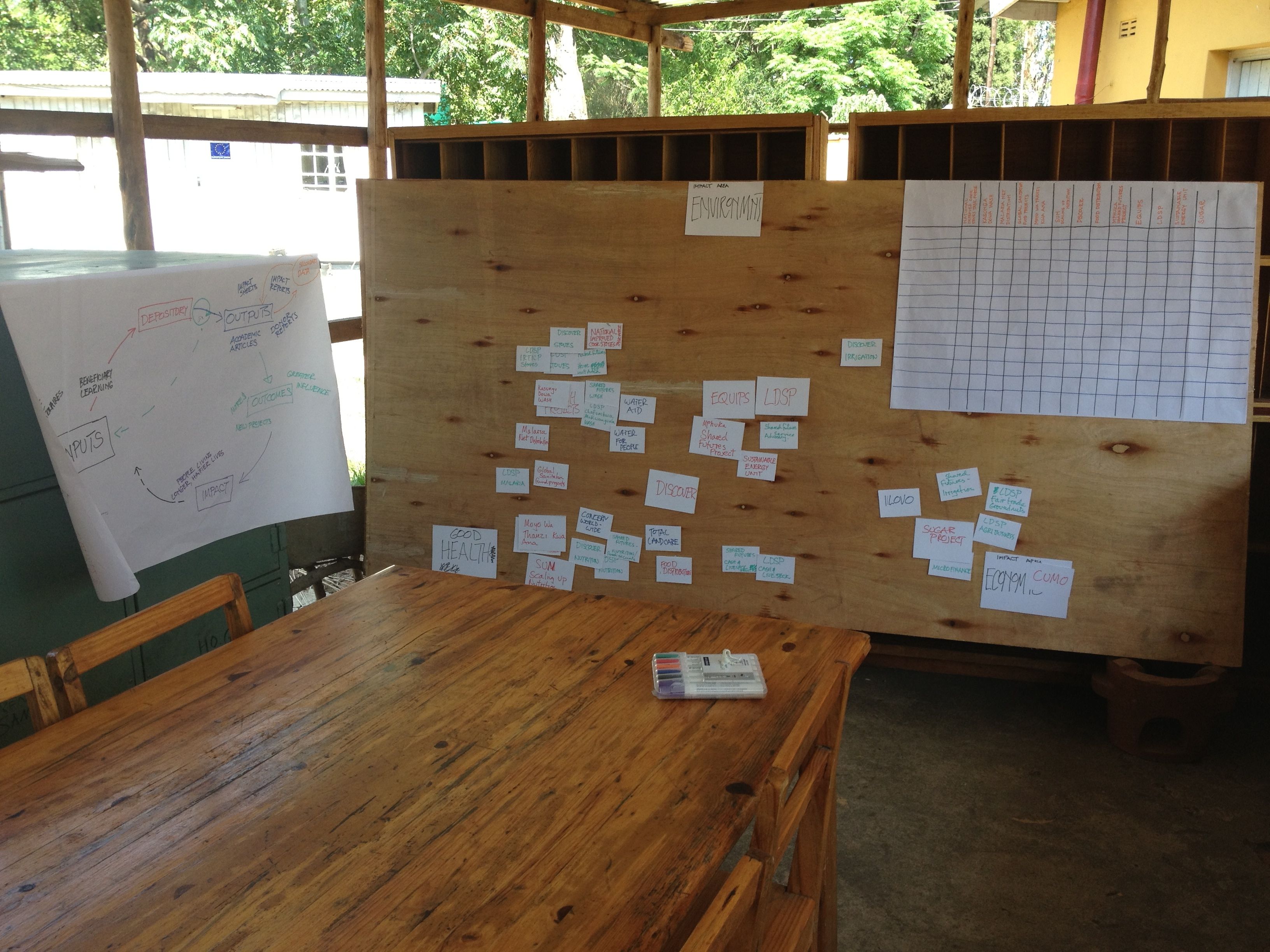“Culture” has many meanings, a definition that I like is; ‘The way we do things around here’ and I wonder if developing a ‘learning culture’ in an organisation is any different to any other form of ‘cultural change’ effort. The expectation is that someone else will do things differently to how they are doing it now.
 My first steps to promote a learning culture through participatory development or PAR principles has been to generate discussion by asking CU staff (as they passed by) to map the various CU projects against a matrix of three outcomes – good health; sustainable environment; economic development. This process also identified the key other organisations operating in similar areas (cards in blue).
My first steps to promote a learning culture through participatory development or PAR principles has been to generate discussion by asking CU staff (as they passed by) to map the various CU projects against a matrix of three outcomes – good health; sustainable environment; economic development. This process also identified the key other organisations operating in similar areas (cards in blue).
The result seems to indicate that there is a strong emphasis on projects and ‘key reporting areas’ towards ‘good health’. Something else the activity opened up was the considerable overlap of many activities in what are nominally different projects. The matrix on the top right is the start of mapping the time and resources by each of the thirteen major projects according to activities carried out. These activities include:
- Conservation agriculture
- Tree planting
- Environmental, HIV, Gender & Rights training and awareness activities
- Training entrepreneurs (stoves, sugar, latrines)
- Construction and rehabilitation of boreholes.
Interestingly an item in the 2012 CU Impact study found that: ‘Most important for people’s well being were: food security, harmonious relationships, health and housing. Money was considered less significant by most people’. I hope that group facilitation and PAR activities will help enable change whilst also meeting the Malawian cultural desire for ‘harmonious relationships’.
